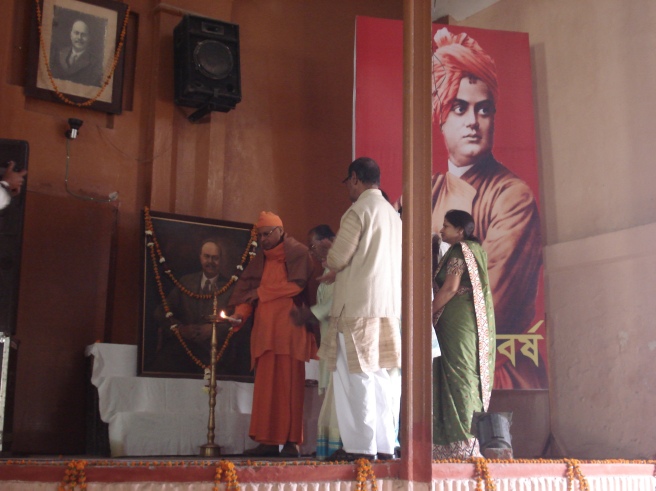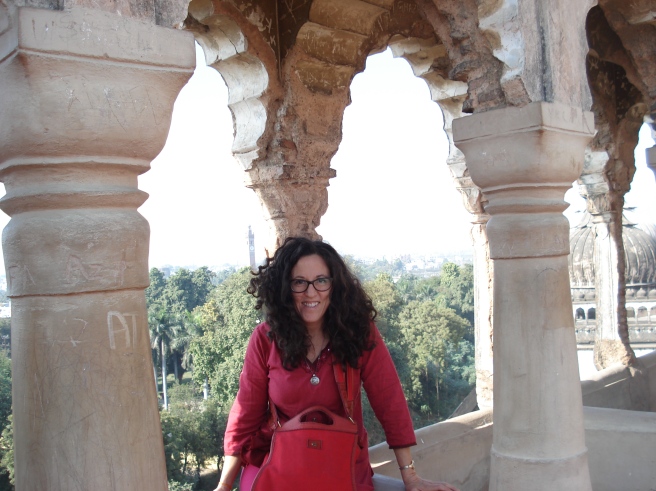I spent last week visiting a friend in Lucknow in the northern part of the country (more pictures in gallery below). Our first day we ventured out to the village of Malihabad so she could conduct some research she is doing about nurseries and seeds. Much of the agricultural land is being converted from local food production to decorative house plants and flowers for export. Prior to our trip, she was online doing a bit of last-minute research on the village when she stumbled upon this little gem:
It is not clear what the purpose of this research is or how the Israeli government would use such information. In any case, the researcher involved clearly doesn’t know about the academic boycott of Israel given that he’s taking funds from the Israeli government to conduct his research. He also seems to be under the mistaken impression that there is some kind of historical enmity between Jews and Muslims when that is not the case. But the largest problem in the blog piece is its erroneous concluding paragraph:
Navras said that as per history, ten Israelite tribes of the northern kingdom of Israel were exiled by the Assyrian invaders in 721 BC. It is believed that some descendants of these lost tribes settled in India between AD 1202 and AD 1761. Afridi Pathans of Malihabad are said to be one of them. Some Israeli academicians have visited Malihabad in the last few years to study customs and traditions of Pathans to find if they have any resemblance to Israelite traditions.
In fact, if he had read Israeli historian Shlomo Sand’s book The Invention of the Jewish People, he would know that:
the Romans never deported entire peoples. We might add that neither did the Assyrians and Babylonians move entire populations from the countries they conquered. It did not pay to uproot the people of the land, the cultivators of produce, the taxpayers. But even the efficient policy of deportation practiced by the Assyrian, and later the Babylonian, empire—in which whole sections of local administrative and cultural elites were deported—was not followed by the Roman Empire. (130)
Notice that while the Assyrians did deport some people, it idid not exile entire peoples and its deportation policy was not about one’s religion.
From one colonial context to another.
After Malihabad we went to what is known as the Residency. It seems that each Indian city has a place with this name as it was once the home of the British colonials ruling the area. But the one in Lucknow is special. You can see it in photographs below more clearly. It was the site of the 1857 uprising (mutiny as the English refer to it) against the British. This expansive space includes the shells of all the former buildings that were destroyed during the Indian uprising against their colonial rulers. It’s quite impressive that one can still see this colonial history–and resistance to it–preserved in such a remarkable way.
My friend’s childhood friend was speaking at a commemoration of Swami Vivekananda’s famous 1893 speech in Chicago at the Columbian Exposition, which celebrated Christopher Columbus’ colonization of the Americas. I had read about him in Vijay Prashad’s The Karma of Brown Folk, but did not remember much about him at the time. Prashad paints him in an interesting light–as one who plays almost a trickster role to the Americans wanting to Orientalize him and fetishize his Hindu beliefs. And, according to Prashad, he was quite critical of the way Americans approached religion:
You Americans worship what? The dollar. Int he mad rush for gold, you forget the spiritual until you have become a nation of materialists. Even your preachers and churches are tainted with the all-perfading desire. (35)
Yet I was struck by a different set of beliefs that he conveyed in that speech as I heard it in the Bengali association hall last week. Here is the part that I was taken aback by:
I am proud to belong to a nation which has sheltered the persecuted and the refugees of all religions and all nations of the earth. I am proud to tell you that we have gathered in our bosom the purest remnant of the Israelites, who came to the southern India and took refuge with us in the very year in which their holy temple was shattered to pieces by Roman tyranny.
Obviously, in 1893 when Zionism was in its incipient stages, there were no Shlomo Sands to historicize the Roman presence in West Asia, alerting us to the fact that the Romans never expelled any people. And yet on this trip I was hearing yet another allusion to Jewish expulsion (although often it is also that they are the 12th tribe who wandered and got lost) from Western Asia, which is often the historical argument used for how Jews arrived in India over a century ago.
The other main attraction I visited in Lucknow was the Bara Imbara, which is a fantastically preserved, beautifully designed Nawab palace from the eighteenth century:
This space, much like the Residency, is filled with fabulous nooks and crannies that seem to make the best hide-and-go-seek playgrounds for children. But in the Imbara there is also a labyrinth, which you need to hire a guide to take you through. One must travel up and down several flights of steep stairs and through a series of narrow hallways to navigate this area. There are interesting nooks, such as a passage way that leads underground, which people used to use to travel surreptitiously from one city to the next. However, the British closed it up. There are also several clever engineering feats that enable communication from one far off location along the same wall. Supposedly there is also a buried treasure there, but in order to discover it the entire property would need to be destroyed.
The photographs below are a bit mixed up, but they are of the places I mention above, plus random snapshots of the city, a couple of AIDS protests we saw because I was there during World AIDS Day, and its incredible food–especially the chaat and paan!









































































